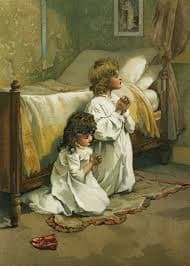The old Christian Mystics: Introduction

By Elizabeth Prata
Introduction
Julian of Norwich (1343 – after 1416) Book: The Showings of Divine Love
Catherine of Siena (1347 – 1380). Book: The Dialogue of St. Catherine of Siena
Hildegard of Bingen (1098 – 1179). Book: Scivias
Bridget of Sweden (c. 1303 – 1373) Book: Celestial Revelations
I read a devotional by AW Tozer who I generally like, who lauded Julian of Norwich, who I don’t like. Julian, a woman, was a mystic. She lived in the 1300s and claimed to have had extensive audible experiences with God. When a fairly credible person like Tozer quotes a totally non-credible person like Julian, things get confusing.
I also wrote the other day about the two things in Christianity that really bug me: heavenly tourism (where people claimed to have been lifted to heaven and walked around touring the place), and direct revelations from God.
When the Tozer issue came up the other day I got to thinking how the problem of direct revelation certainly isn’t new. Mystics have always populated the faith. We read of Jesus chastising the church at Thyatira and calling out the metaphorically named Jezebel for prophesying things He never said. (Revelation 2:20).
After the Fall, God cursed the woman with wanting to usurp her husband, we’ve had it in us ever since. We want to usurp our husbands, our pastors, and God’s word.
I’ve written frequently about the of female usurpation vs. female contentment in our roles. I’ve also written about specific women’s claims of direct revelation (Jackie Hill Perry, Beth Moore, Joanna Gaines, Sarah Young, Jennie Allen, Priscilla Shirer etc).
But did you know in the medieval era there was a whole cottage industry of women cementing their place as prophetesses? These women claimed constant, deep, and frequent revelation from God. They wrote their revelations down and they personally, and their books, became famous. We can read them to this day. Julian of Norwich was one of the most famous of these prophetesses, the one Tozer quoted. Others were Catherine of Siena, Birgitta (Bridget) of Sweden, and Hildegard of Bingen. Their “contributions” to the faith were not solely restricted to writings, because these women also shaped art and music of their day and to this day. It’s safe to say they were medieval “Influencers”!

This week I’m going to explore each of these women who were so vastly influential. I’ll take a look at their most popular ‘visions’ and revelations.
A few years ago I read Memoirs of a Medieval Woman by Margery Kempe, translated by Louise Collis. It’s hilarious, packed full of history, and gives a wonderful context for all this mystical, ecstatic revelation from these more famous mystical women whom Margery emulated and competitively tried to surpass. She is today acknowledged as a mystic in the Anglican church but not canonized as a Catholic saint. Margery lived at the end of the 1300s into the early 1400s. She actively sought to become famous through revelations, similar to today when less famous women wanting to elevate their platform, then emulate the famous influencers.
Margery was pretty insufferable, even her traveling companions along the way on their pilgrimage to the Holy Land tried to dump her again and again. Margery had 14 children and was married, but still decided she had to make a pilgrimage to Jerusalem. That was the thing of the day back in Medieval times, mysticism and pilgrimages. Though admittedly it was unusual for a wife and mother to gallivant off to faraway lands by herself, but that was Margery!
It just goes to show, that from the start women sought places the Bible denied them, that the more accepted or popular bad examples of females in unbiblical roles will always stand as an inspiration for other sinful women coming up to follow in their footsteps, and that having a weak and unassertive husband more easily allows a wife to go off the rails in many different ways (as Margery’s husband was and did).
So take a trip with me this week looking at famous mystics Julian, Catherine, Hildegard, and Bridget, so that when someone like Tozer or someone else quotes them, you will know not to absorb the material, but reject it. I’m also hoping to achieve the goal of showing that female mysticism is nothing new, because sin is nothing new. You know what’s coming next:
What has been, it is what will be,
And what has been done, it is what will be done.
So there is nothing new under the sun.
Ecclesiastes 1:9
So stay tuned this week for “Female Mystics Week”!





